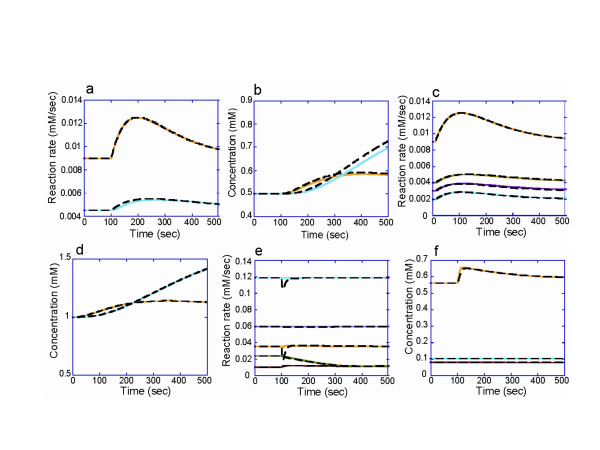Figure 3.
Comparisons of time courses produced by dynamic and hybrid models. The coloured lines and the broken black lines represent the time courses calculated by dynamic and hybrid models, respectively. Refer to Fig. 2 for pathway nomenclature. The hybrid model in Fig. 2a yielded similar time courses of change in the reaction rates and the metabolite concentrations to the corresponding dynamic model. (a) The reaction rates of E_BC (yellow) and E_DF (blue). (b) The concentrations of compounds D (yellow) and H (blue). The time courses of the pathway model in Fig. 2b were also in agreement with the dynamic model. (c) The reaction rates of E_BC (yellow), E_CF (green), E_CE (red), and E_CD (blue). (d) The concentrations of compounds E (yellow) and H (blue). The results of these models were also in good agreement for the erythrocyte model. (e) The reaction rates of the hybrid model differed only slightly from those of the dynamic model. The lines in blue, purple, yellow, green, and red denote the reaction rates of GSSGR, G6PDH, TK2, TA and R5PI, respectively. (f) The hybrid and dynamic models yielded almost identical time courses in the concentrations of metabolites such as X5P (yellow), GSSG (blue), and NADP (red).

